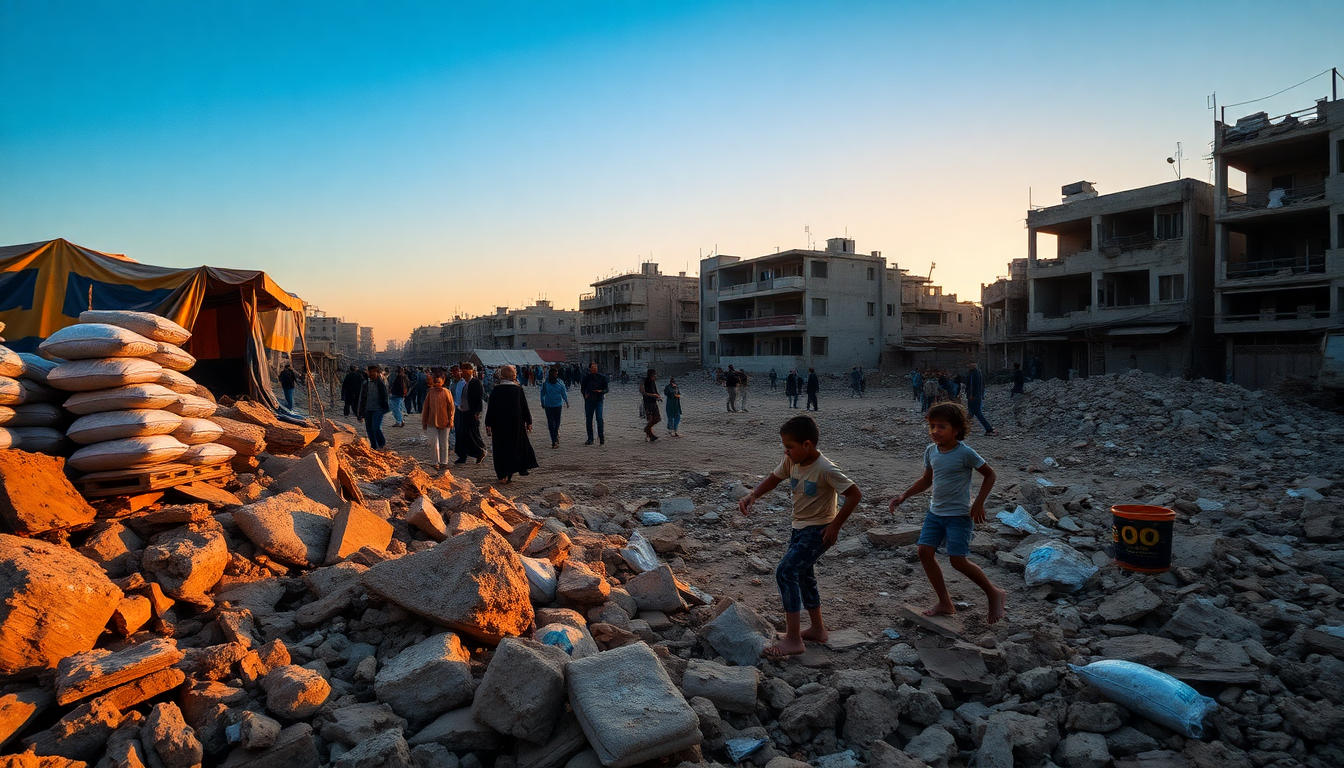Table of Contents
The geopolitical climate of the Middle East is in constant flux, and the recent announcement of a potential ceasefire between Israel and Hamas is stirring both hope and skepticism. With the U.S. President spotlighting the urgent need for a resolution, this proposed deal could change the game for peace in the region. Given the rising international pressure and the dire humanitarian situation in Gaza, the stakes have never been higher.
Current Ceasefire Proposal and International Dynamics
Just recently, U.S. President Donald Trump declared that Israel has agreed to a 60-day ceasefire in Gaza, with the help of Qatar and Egypt. But what does this mean for the future? The President’s message on social media captured the urgency of the moment: “I hope, for the good of the Middle East, that Hamas takes this Deal, because it will not get better — IT WILL ONLY GET WORSE.” This statement underscores the escalating tensions and the pressing need for immediate action.
While the details of the ceasefire are still murky, both Israeli and Hamas officials have remained tight-lipped about their responses. However, international pressure for a halt to the fighting is unmistakable. A recent report from the European Union’s diplomatic service raised alarms about Israeli actions in Gaza, particularly the restrictions on humanitarian aid that might conflict with its agreements with the bloc. This scrutiny adds another layer of complexity to the negotiations, as external stakeholders push for a resolution that balances humanitarian needs with political aims.
The Humanitarian Crisis in Gaza
The ongoing conflict has taken a devastating toll. According to the Gaza health ministry, more than 56,000 Palestinians have died since the hostilities reignited after Hamas’s attack on Israel on October 7, 2023. This attack resulted in around 1,200 Israeli deaths and the abduction of over 250 hostages, with approximately 50 still believed to be alive in Gaza. The humanitarian implications are dire, highlighting the need for a swift resolution to prevent further loss of life.
A potential ceasefire could pave the way for much-needed humanitarian aid to reach those in desperate need. But history tells us that ceasefires in this conflict often face significant hurdles. Previous agreements, including one brokered by Trump earlier this year, have crumbled under pressure. The skepticism surrounding this new proposal is deeply rooted in that history, raising critical questions about its feasibility and the commitment of all parties involved.
Future Implications and the Role of International Stakeholders
Looking ahead, the outcome of this ceasefire proposal could have far-reaching implications for the broader Middle East. As Israeli Prime Minister Benjamin Netanyahu prepares for discussions with President Trump next week, the spotlight will be on securing commitments that could lead to a sustainable peace agreement. The roles of regional players like Qatar and Egypt are crucial; their influence may help mediate tensions and foster constructive dialogue.
Moreover, the international community’s involvement cannot be overlooked. The pressure from global powers and organizations to uphold human rights and ensure humanitarian aid delivery will be vital in shaping the negotiations. As we delve into these dynamics, it’s clear that achieving peace will require not only diplomatic efforts but also a genuine commitment to tackling the underlying issues that have fueled this conflict for decades.
In conclusion, while the proposed ceasefire offers a glimmer of hope, the intricacies of Middle Eastern politics and historical grievances present significant challenges. It’s crucial for all parties to engage sincerely in this dialogue, as the future stability of the region depends on their ability to navigate these turbulent waters.


